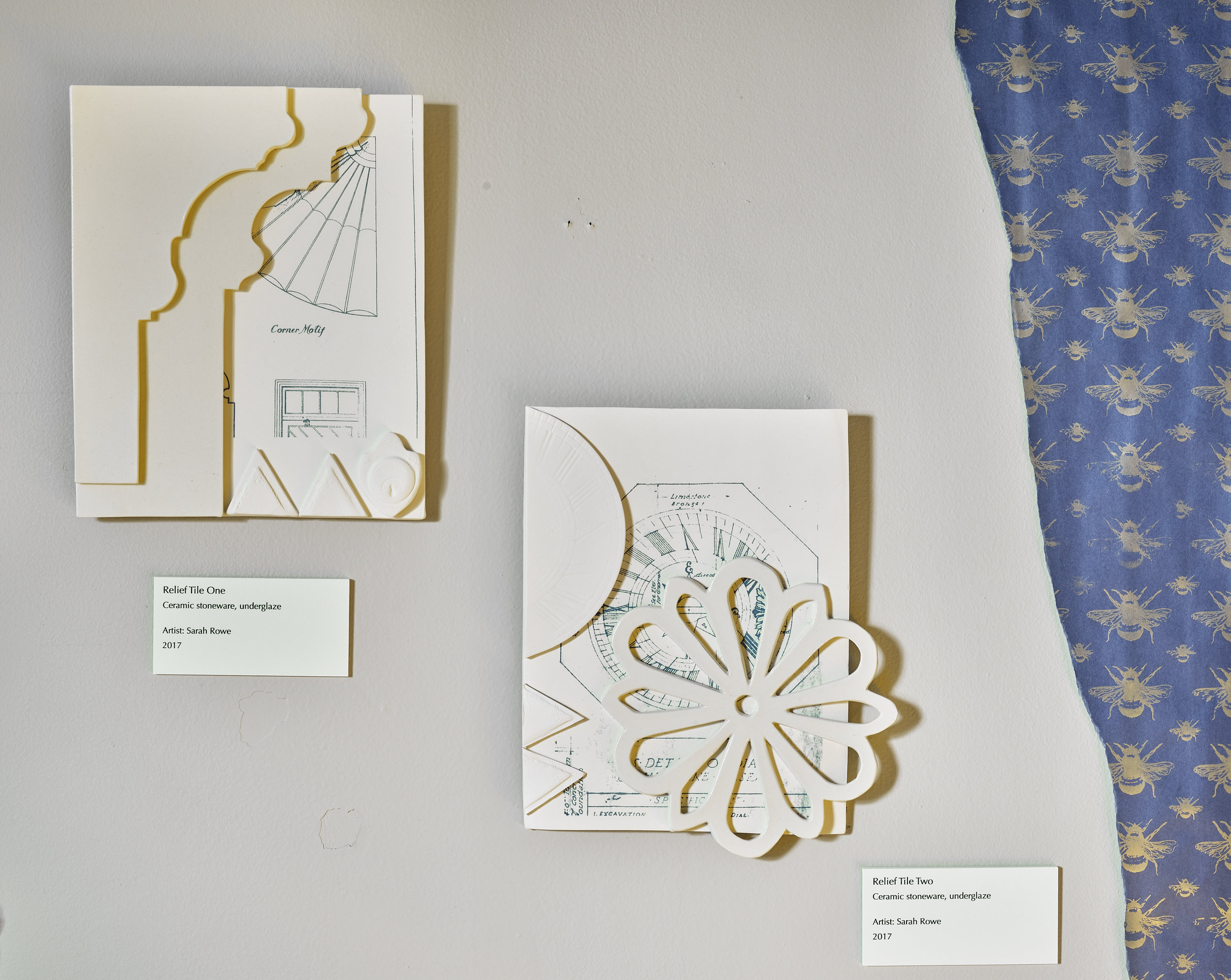Infinite Archive: MJM
Responding to the unique history, archives and architecture of Morris-Jumel Mansion three artists have reinterpreted archival objects into a site-specific installation. Ceramic objects, jewelry and artists’ books present a visual interpretation based on different areas of research by each artist. This shifting focus addresses how histories drift over time and how certain historical narratives become prominent while others recede into obscurity. This collection of artist’s books explores issues in architecture, identity and history relating to the Morris-Jumel Mansion.
In her book focusing on portraiture and pattern, Rachel Sydlowski prints historical portraits of women and remnants of wallpaper over maps of New York City from the 18th century. Gold Napoleon bees are inserted and sewn between the folds of the accordion construction. The portraits and maps are inverted in the second half of the book alluding to Eliza Jumel’s lifelong reversals of fortune and crafty reinventions.
Sarah Rowe melds and associates components related to the mansion’s garden from blueprints, planting plans and botanical prints. Rowe is interested in the historical and contemporary significance of the plants in the garden as well as the exquisite design of the garden house and sundial. Patrick Perry’s book holds a collection of six cyanotype postcards referencing the architecture of the Morris-Jumel Mansion and personal letters exchanged between Stephen and Eliza Jumel. Blueprints from the archive serve as a point of visual reference and draw attention to the architectural structure as a living document.
A series of ceramic ginger jars constructed by Rachel Sydlowski address how decorative objects are used to establish and assert social position and power in a domestic setting. Portraits of society women on the surface of the jars are appropriated from the National Portrait Gallery Archive. Their likeness has been removed and replaced with wallpaper patterns from various periods of the mansion’s history, alluding to Eliza’s shapeshifting identities. Gold luster bees swarm the jars, reflecting Eliza’s fascination with collecting imperial objects belonging to Napoleon Bonaparte, possibly a manifestation of her dedication to achieving financial security and social status. While ginger jars were initially used to store and transport spices, they have been used chiefly as decorative objects since the 19th century. The dialogue between utilitarian object, the shipping of luxury items and decorative objects are reflective of her first husband’s mercantile background and Eliza’s unusual deliverance from destitution.
A series of heavily etched wearable objects constructed of sterling silver created by Patrick Perry are a direct response to the handwritten letters between Eliza and her husband Stephen Jumel. The archival letters reveal an accretion of private exchanges, ranging from the quotidian to the intimate. Perry has chosen to pay homage to these intimate written exchanges by etching fragments of the letters directly onto silver. The material shift from pen and ink to metal raises questions about impermanence and indelibility and public and private lives.











